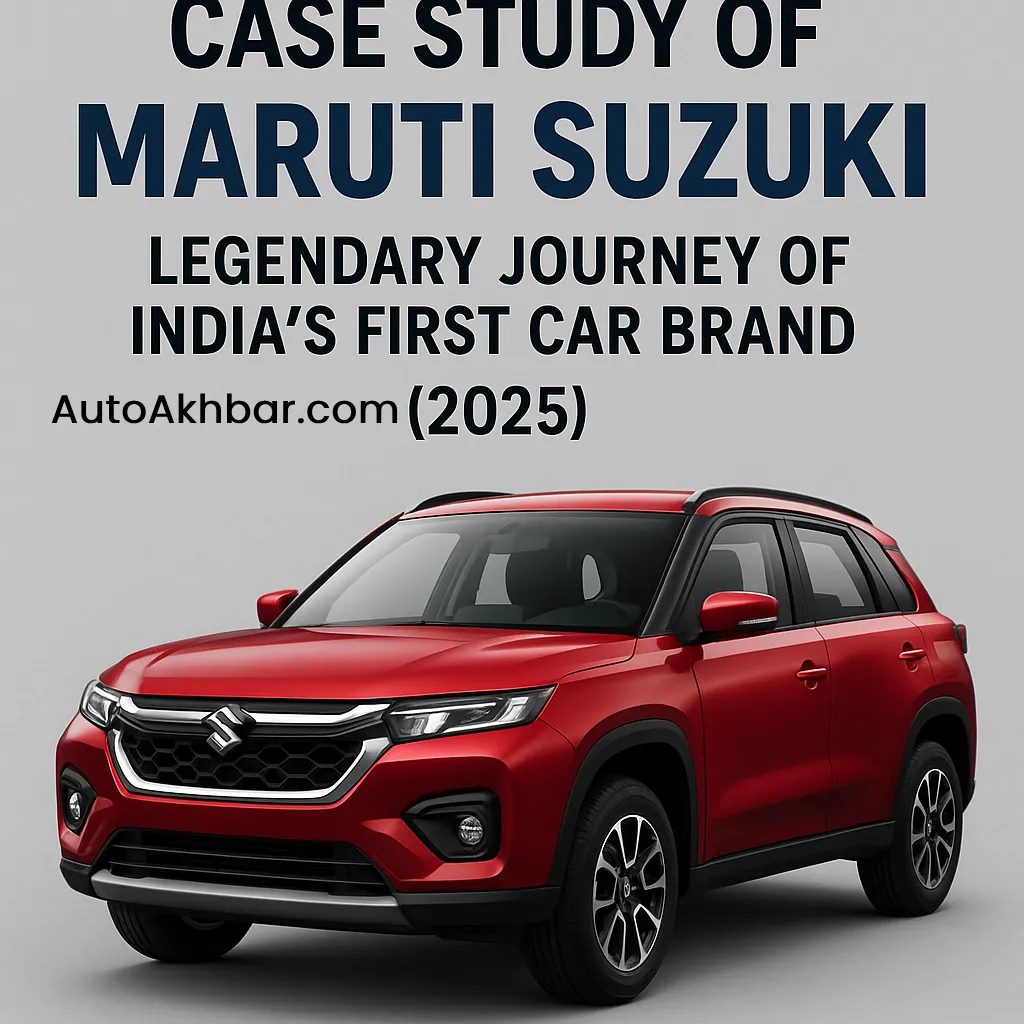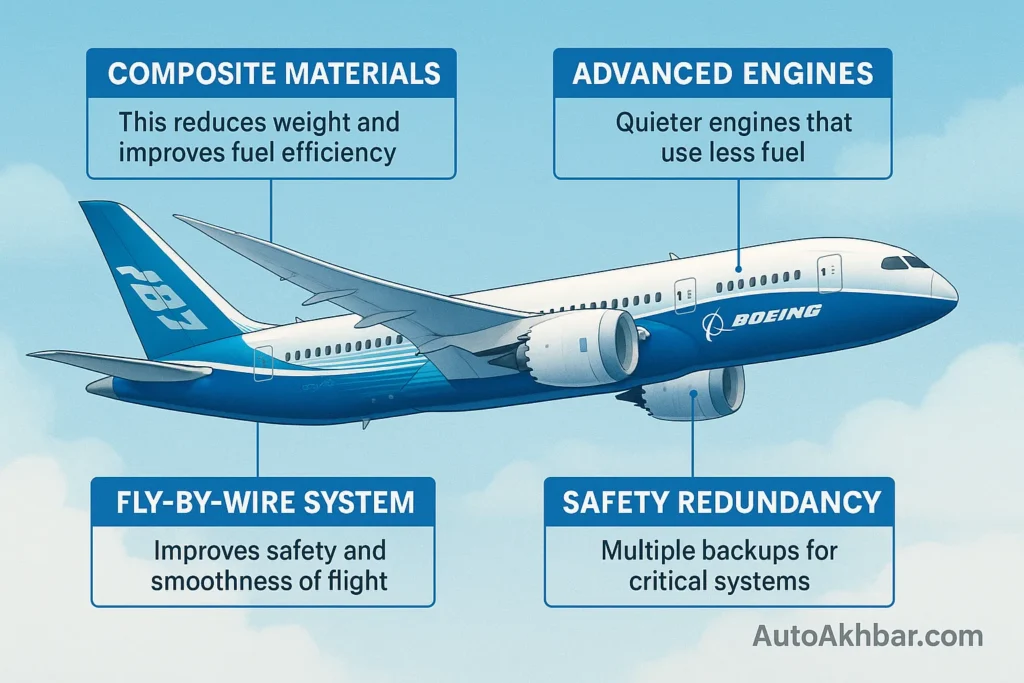Introduction: India’s Most Loved Car Brand
Today, we’re diving into a case study of Maruti Suzuki, the company that introduced India to affordable and reliable four-wheelers. Whether you’re from the metros or small towns, chances are your family owned or dreamed of owning a Maruti. But what’s the real story of Maruti Suzuki? Where did it all begin?

Table of Contents
What is Maruti Suzuki?
Maruti Suzuki is not just a car company—it’s a household name in India. Originally started as Maruti Udyog Limited, it later partnered with Japanese automobile giant Suzuki Motor Corporation. Today, Maruti Suzuki is the largest car manufacturer in India, holding over 40% market share even in 2025.
But to truly understand the brand, we need to look at its roots—its origin story, its ups and downs, and its role in shaping modern India.
Where It All Began – The History of Maruti Suzuki
Let’s rewind to 1970s India. Back then, the only options for cars were limited to brands like Hindustan Motors and Premier. These cars were expensive and offered outdated technology. There was no real car for the common Indian middle class.
In 1971, Sanjay Gandhi—son of Prime Minister Indira Gandhi—proposed building an indigenous Indian car. Thus, Maruti Limited was born. The first model, Maruti 800, launched in 1983, and it changed everything.
Even though Sanjay Gandhi tragically passed away in a plane crash in 1980, his vision was kept alive. The Government of India partnered with Suzuki, and Maruti Udyog Limited became Maruti Suzuki.
This is how the history of Maruti Suzuki in Hindi-speaking households became iconic—a story of “Sapno ki Gaadi.”

2025 Maruti Swift Hybrid Launch
Maruti’s Strategic Moves – The Business Side
Let’s explore why this brand continues to dominate:
1. Affordable Pricing
From day one, Maruti focused on value for money. Maruti 800 was priced at ₹48,000 in 1983—making it accessible to thousands of middle-class Indian families.
2. Fuel Efficiency
Maruti understood India’s fuel-conscious audience. Even today in 2025, their models like the Alto, Swift, and WagonR offer class-leading mileage.
3. Service Network
They built the largest service network in India, even reaching tier-2 and tier-3 cities. This made after-sales service cheaper and more accessible.
4. Product Lineup for Everyone
From hatchbacks to SUVs, and now EVs like Maruti eVX, Maruti has kept innovating across segments.

Case Study of Maruti Suzuki – Key Business Lessons
- Start with a Purpose: Maruti began with a national vision—to empower Indian families with personal mobility.
- Partnerships Matter: Suzuki brought in the technology, Maruti brought in local insights. It was the perfect synergy.
- Consistent Branding: “Petrol khatam hi nahi hota” – Maruti was always seen as reliable, affordable, and trustworthy.
- Adapt or Die: From BS6 compliance to EV innovations, Maruti has always adapted without alienating its customer base.
What is the Story of Maruti Suzuki Today?
In 2025, Maruti Suzuki continues to evolve. With plans for hybrid and electric cars, expansion into global markets, and a renewed focus on safety, the brand is moving with the times—without forgetting its roots.
Their EV Concept eVX is expected to roll out soon, with a range of over 500 km—paving the way for an electric future. Yet even today, models like Alto, Swift, Dzire, and Brezza rule the Indian roads.
Conclusion: Why Maruti Still Wins
The story of Maruti Suzuki isn’t just a corporate success—it’s an emotional story of India’s transformation. From a government project in the 70s to a market leader in 2025, Maruti represents progress, trust, and accessibility.
So next time you see a Maruti on the road, remember—it’s not just a car. It’s a symbol of India’s dreams on four wheels.
❓FAQ: Case Study of Maruti Suzuki
What is the history of Maruti Suzuki?
Maruti Suzuki began as Maruti Udyog Limited in 1981 as a government initiative. It partnered with Suzuki Motor Corporation of Japan to bring affordable cars to Indian families, starting with the legendary Maruti 800 in 1983.
Why is Maruti Suzuki successful in India?
The brand’s success is due to affordable pricing, fuel-efficient models, wide service network, and strong emotional connect with Indian consumers.
What is the story of Maruti Suzuki’s first car?
The Maruti 800, launched in 1983, was the first car. It revolutionized Indian roads by offering a budget-friendly, reliable vehicle to the middle class.
How has Maruti Suzuki evolved over the years?
From petrol cars to hybrid and now EV concepts like the eVX, Maruti Suzuki has continuously adapted to market needs and government regulations.
Is Maruti Suzuki launching electric cars in 2025?
Yes, Maruti Suzuki is planning to launch the Maruti eVX electric SUV in 2025, offering a range of up to 500 km.



Your work has such a 🔥 positive influence on everyone who takes time to read